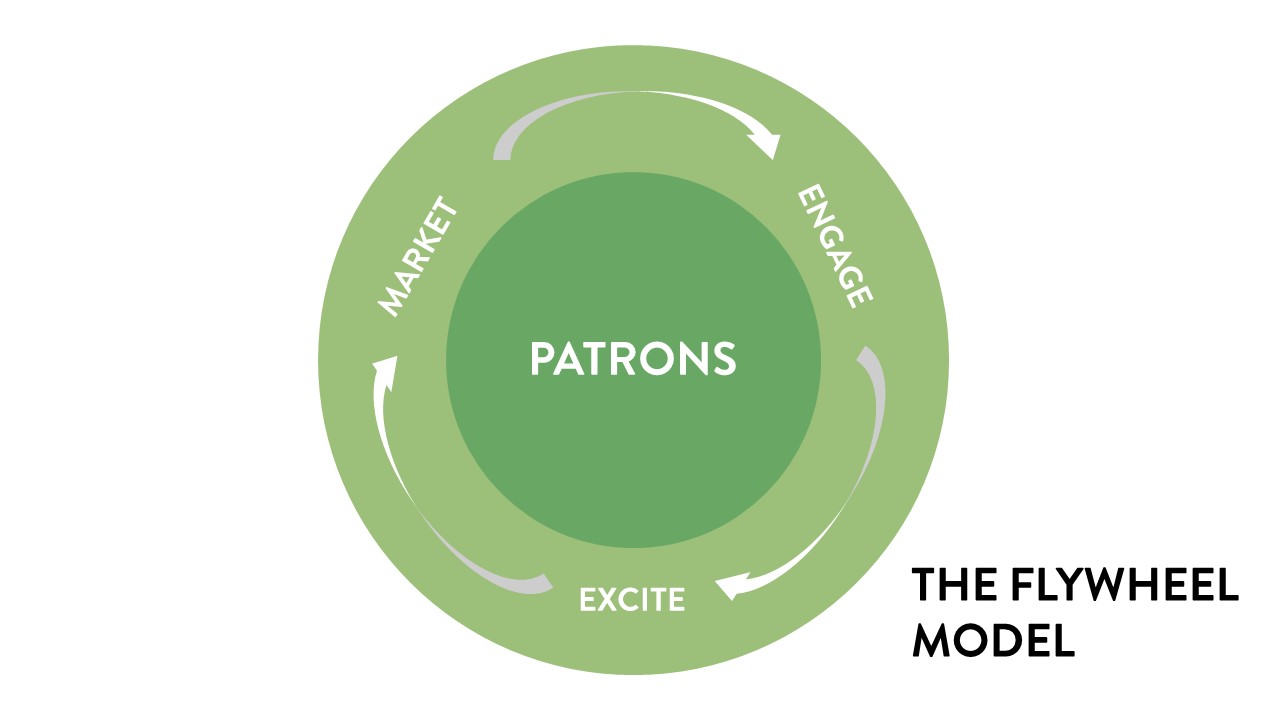3 min read
Optimise your Theatre Marketing Plan for 2020

With New Year’s Day and successful year-end campaigns still ringing in the air, it’s time to continue your marketing momentum from 2019 into the new decade. Whether marketers are at the start or in the middle of their fiscal year, the new year is an excellent time to launch new campaigns and to optimize their current marketing strategies. While it’s natural to focus on new approaches at the onset of another year, honing existing campaigns can add additional value for marketers while allowing them to make use of the time and effort they have already put in.
Here are some key areas for theatre marketers to think about when crafting or revisiting their marketing plans for the year ahead. By taking these into account, marketers can set up their year to grow on their progress from the year before and generate more revenue by attracting new patrons and nurturing existing ones into repeat attenders.
How to Drive Growth with a Theatre Marketing Plan in 2020
Set measurable goals
To increase ticket sales and retention at their organisations, marketers should break down how they will measure success. These measurements could be any combination of the following:
- Increase average patron spend
- Increase first-time patron attendance
- Increase attendance and retention
- Increase online purchase and donation rate
- Increase the number of loyalty programme members or subscribers
- Leverage price optimisation
Next, consult sales and marketing reports to see how the marketing department moved all of those areas forward in the year before and in previous years. Identify which parameters are consistently performing the strongest and which ones need the most improvement. From there, marketers can set goals on which areas to focus on and what kind of progress they need to make in each area to reach their overall targets.
Marketers can use SMART criteria to ensure their goals are Specific, Measurable, Achievable, Relevant and Time-based.
Rethink reattendance
Once they identify their KPIs for 2020, marketers should have an understanding of just how much of their revenue is coming from new ticket buyers versus reattenders. While the team might be already hard at work on their next campaign to attract new ticket buyers, they should also consider new ways to nurture first-time buyers into reattenders.
Retaining existing patrons has far more revenue potential, so arts marketers should pay close attention to how much time, budget and staff resources they are devoting to encouraging their patrons to re-attend. Plan time to craft an exciting email campaign to entice first-timers to see a second show, and create special offers to help reward loyal customers for coming back. It can still cost less than getting someone in the door for the first time.
Adopt a Flywheel mindset
The business world is buzzing about the Flywheel marketing concept, and it has plenty of relevance for helping arts marketers optimise their own plans.
For years, many arts marketers have positioned their plans in the context of the marketing funnel: the process of attracting new patrons and converting them into ticket buyers. With the funnel approach, marketers place a lot of emphasis on attracting new customers when, as mentioned above, there is a wealth of untapped revenue in their existing customer base. According to the 2019 Spektrix Insights Report, only a quarter of patrons who purchased in 2016 returned in 2018. That hints that marketers in the industry have loads of potential to think about retention and new ways, and where the Flywheel can be useful.

In the new year, marketers can resolve to use their CRM to embrace a retention-focused mindset. Use customer behaviour reports to identify loyal patrons and segmentation and email tools to engage with them directly, rewarding them for their loyalty and exciting them with an excellent experience when they come to the organisation. How can the organisation leverage social media not just to find new patrons but to engage their current ones? The happier existing customers can be, the more word-of-mouth will spread, and the more the wheel will turn with new and loyal patrons.
By adopting the Flywheel and re-focussing their efforts on existing patrons, theaters can establish a more substantial presence in their communities. In brainstorming ways to surprise and delight patrons, think of how inviting them into the venue for pre- and post-show events could transform how they interact with the space. How could partnerships with local bars and restaurants encourage patrons to linger in the neighborhood and treat seeing a show as an even fuller experience? Organisations can learn about how to best engage their patrons by creating patron advisory boards where they consult the community on how to best meet their needs.
By understanding how each of their efforts fit into the organisation’s wider goals of growing attendance and loyalty, arts marketers can boost their plan’s effectiveness for the year ahead. Having a detailed and optimised plan in place can help marketers drive revenue growth and long-term ROI from their campaigns in 2020.
More insights and best practice ideas from Spektrix
Hailey Colwell is a former Marketing Manager at Spektrix


